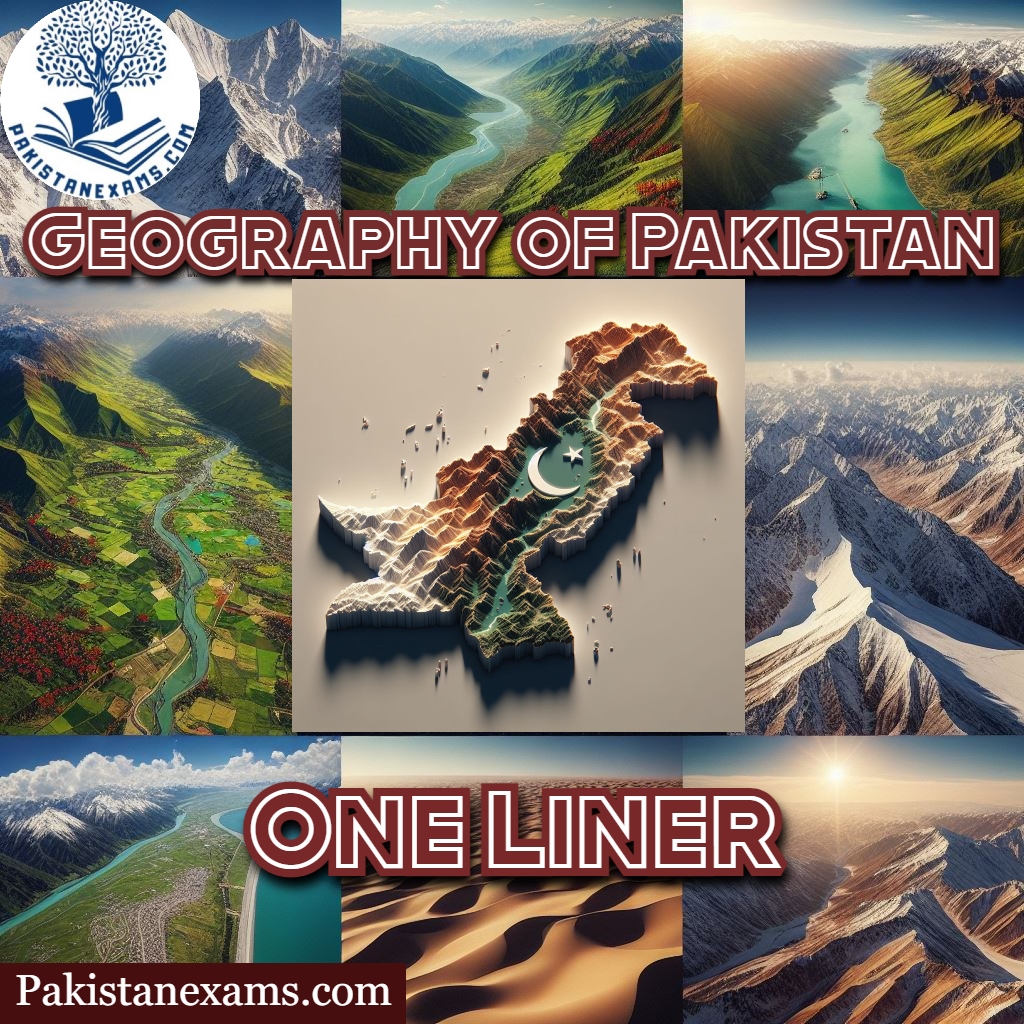Explore the 3rd part of the diverse geography of Pakistan, a land of stunning beauty. From the snow-capped peaks, glaciers, and passes to the serene beauty of Lakes and rivers. No doubt, the beauty and geography of Pakistan is a precious gift of God. The geography of Pakistan is very important. The reason is that many questions about the geography of Pakistan have been asked not only in competitive exam papers but also in interviews. Therefore, a student should learn the geography of Pakistan.
- Warchha mine is famous for salt.
- The longest tunnel in Pakistan is the Khojak Tunnel (3.91 km) in Balochistan.
- Mangla Dam is built on the Jhelum River.
- The total length of the Ravi River is 720 km. (ref: Jammu and Kashmir Forest Department website)
- Panjgora River is in K.P.K.
- The total installed hydroelectricity generation capacity of the Tarbela Dam is 3478 MW.
- China helped in building The Chashma Nuclear plant. Its installed capacity is 325 MW.
- Bolan, Zhob and Mula Rivers are in Balochistan.
- Hingol is the longest river of Balochistan.
- Hingol Dam is in Balochistan.
- Dasht and Porali Rivers are in Balochistan.
- 24 rivers are present in Pakistan, 7 in Balochistan, 4 in Sindh, 8 in KPK, and 5 in Punjab.
- Jhelum and Chenab rivers merge at the Trimmu Headworks in Jhang.
- The Indus River rises from Tibet. With a length of 3180 km, it is the longest river in Pakistan.
- The Indus River is called the “Nile of Pakistan”.
- At Mittankot all rivers of Punjab enter into Indus.
Geography of Pakistan Part 2 - Ravi is the smallest and most polluted river in Pakistan.
- Chagi (Balochistan) has the biggest deposits of copper.
- The Saindak project, in Chagi Balochistan, is producing copper, silver, and gold.
- Muslim Bagh, in Balochistan, is famous for chromite deposits.
- Uranium is found in Dera Ghazi Khan.
- Sulfur is found in the areas of Pakistan in Koh e Sultan.
- Sutlej, Ravi, and Beas rivers were given to India under the Indus Water Treaty.
- Indus Jhelum and Chenab rivers were given to Pakistan under the Indus Water Treaty.
- The origin of the Upper Bari Doab Canal is Chenab.
- Diamer Basha dam on the Indus River.
- Diamer Basha dam will produce 4500 MW of electricity.
- The electricity production capacity of Ghazi Barotha Dam is 1450 MW.
- Tarbela is the biggest earth-filled dam in the world.
- Thar coal deposits are the biggest deposits of coal in Pakistan.
- The lowest point in Pakistan is the Indian Ocean.
- The highest point in Pakistan is K-2.

